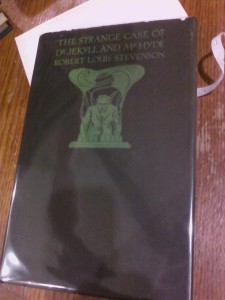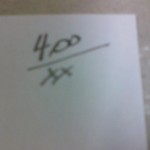At some future point, a child will pick up a book and turn it over and over looking for the On button. The rise of the eReaders is upon us.
Some schools are already incorporating tablets and other electronics to replace the old paper-based thing. That’s okay.
I don’t want to say this out loud, but if you’ll lean in to the screen there, I’ll whisper it:
Schools have a racket going with the textbooks. I don’t mean the elementary schools where books are handed out at the beginning of the year and then returned before summer vacation. (Do they still do that?)
Universities and colleges. Campus bookstores. Pick up the syllabus and wander over to the student union. Drop several hundred on the required materials, and that’s at used-book prices. Try to turn them back in later and Boom! Curriculum change. Won’t be using that book next semester. Can’t give you anything for it.
Sorry.
Okay. Whispering ended.
If the collegiate texts could be downloaded onto a reader, a sizable chunk could be hacked out of those education costs. I’m all for that.
Reading books for pleasure, though?
I’m hoping that the books will linger around for a while, but who am I kidding? Go ahead and give me your thoughts – call me on your rotary dial phone. But call before closing-time. Look down at your wristwatch and check the hour. Go ahead, I’ll wait a minute. A couple of you are actually wearing one. Does it have the big minute hand and the little hour hand?
Telling time used to be a school-day lesson. Pass back those purple-y colored mimeographed sheets with the little clock faces all over, and write the correct time underneath with the old #2.
Well, I’m here to tell you, THAT lesson plan is gone.
Another one gone bust is the book-respect lecture, which brings me the long-way back to our first reference: kids and those darned non-electronic readers. Books, as we call them. I can vividly recall my teacher holding up a book for the demonstration. Even as an educational tool and example, she was unable to physically turn down the page corner in teaching us that such an action was unacceptable. She curled it over a little bit, but didn’t crease it. She just explained the creasing part. Couldn’t do it. The woman RESPECTED books.
No dog-earing the pages, she said. And of course, I heard dog-ear-rings, a fashion faux-pas if there ever was one.
TEACHER: Don’t do the dog-earing.
ME, harboring a dog-earring question while raising and waving my hand, supporting it aloft at the elbow with the palm of my other hand as she continues to look around the class, ignoring my attempts at getting her attention to the point that I cannot keep my waving hand up any longer. I coughed. No good. Hand down.
TEACHER, finally looking in my direction: Did you have a question?
ME: Dog earrings?
TEACHER: You’re asking about dog earrings?
ME: Uh, no. Can I go to the bathroom?
As I headed out, she held up a scrap of paper for the class to see, wedging it near the spine. Mark your place with a piece of paper instead, she said. (A book-wedgie, I thought, but did not say aloud.)
Later, the teacher brought a pencil dangerously close to the book’s pages while warning us to never, ever – write in a book. Ever. Her eyelids kind of lifted as she said it. Never, she repeated. Ever.
I got it. As a result, I am a lifetime supporter of the post-it note foundation. I don’t write in books, despite the practices of others in the book-selling profession. Don’t write in books. Ever. No dog-earrings, certainly.
Which brings us at last to the point of today’s entry. (You’re asking – I know: What’s the point?)
A fellow carried to the counter a 1930 first edition with a surviving (now in plastic protector ) dust-jacket and slipcase, then turned it over in his hands several times, for my benefit. He didn’t see a sticker on it, he said, and wondered about the price. He opened the front cover and pointed to a penciled-in price of four-dollars.
For back-story purpose: The book was in a rare book case and a sign-card in front of it displayed the price. Another copy of the same book is currently listed on the internet at well over three-hundred dollars. I’m asking $285, the price that was written on the tent-sign. But there was no disputing the fact that $4 was lettered in pencil on the front end-page. A used-book dealer had priced it at four-dollars once. Once, in the eighty-plus years since it had become a used book. Back when it wasn’t scarce or hard to find, I’d guess. Sometime when new hardbacks sold for under ten bucks. Well under.
That must have been an old price, I suggested. A really old price. (I suspect he knew that, since he admitted to having noticed a card with two-hundred-something written on it.) The $4 notation-in-pencil was a price once – but not mine.
I don’t write in books, I explained. Never.
Ever.
Holster your pencils and come visit!
McHuston
Booksellers & Irish Bistro
Rose District
122 South Main Street, Broken Arrow OK

